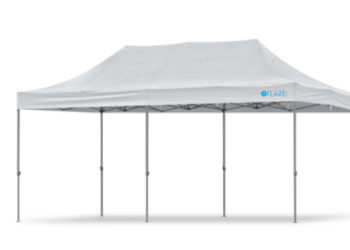The Drivers of Change
Modern manufacturing is under pressure to adapt quickly and cost-effectively. Traditional industrial line upgrades often take 6 to 8 months, leading to production downtime and delayed go-to-market schedules. In contrast, modular architectures enable reconfiguration in less than two weeks.
This shift is becoming essential. According to McKinsey & Company, average product lifecycles in industrial sectors have dropped from five years to just 18 months. Manufacturers need systems that evolve with demand.
Modularity balances flexibility and performance through this core formula:
Modularity = Plug-and-Play Hardware × Configurable Software
At Iainventory, we stock over 2,000 modular components certified for industrial reconfigurability. These solutions enable scalable upgrades without full system replacements.
Key Technology Architecture
Modular industrial electronics follow a three-layer architecture, each designed to support agility and upgradeability.
| Layer | Core Components | Agility Value |
| Hardware Interconnect | High-speed connectors (e.g., Samtec Flyover®) | 85% reduction in reconfiguration time |
| Functional Module | COM Express modules, FPGA mezzanine cards | Upgrade processing power on demand |
| Management Control | Intelligent backplane ICs (e.g., TI PMBus controllers) | Remote monitoring, lifecycle prediction |
Hardware Interconnect Layer
High-speed connectors like Samtec Flyover® support bandwidths above 56 Gbps and allow tool-free installation, reducing reconfiguration time significantly. Their performance ensures signal integrity across modular interfaces.
Functional Module Layer
COM Express modules and FPGA mezzanine cards provide application-specific processing that can be swapped or upgraded independently, preventing full system overhauls and reducing electronic waste.
Management Control Layer
Smart backplane controllers, such as Texas Instruments’ PMBus chips, monitor power and thermal conditions. These components help predict replacement cycles and reduce unplanned downtime.
Real-World Applications
Use Case 1: Automotive Line Conversion
Challenge: Converting a production line from internal combustion engine vehicles to electric vehicles typically requires up to 120 days of downtime.
Solution: Using PXIe modular instruments and programmable power supplies (e.g., Iainventory P/N: CG-PSU-48V20A), one manufacturer reduced the switchover time to just 9 days.
Result: The new setup saved approximately $2.3 million in avoided production losses and allowed earlier market entry.
Use Case 2: Semiconductor Equipment Iteration
Challenge: Each generation of wafer inspection systems requires optical module recertification, leading to delays and high costs.
Solution: By integrating standardized vision processing modules compatible with NI CVS-1457XR, manufacturers reduced integration time.
Result: Deployment costs dropped by 70%, enabling faster iteration and alignment with next-gen chip timelines.
Implementation Roadmap
To successfully transition to modular architectures, manufacturers should follow a four-phase strategy:
Interface Assessment
Start by selecting industry-recognized open standards. OpenVPX and Qseven are preferred for their scalability, thermal robustness, and vendor interoperability.
Module Selection
Key specifications to prioritize include:
- Hot-swapping endurance of over 100,000 cycles
- Environmental ruggedization (temperature, vibration)
System Integration
Use PCIe switch chips such as Microchip Switchtec™ to facilitate scalable topologies. This enables high-throughput inter-module communication across complex setups. Pair with module lifecycle management software for automated diagnostics and firmware updates.
Continuous Optimization
Leverage digital twin technology to simulate module combinations before physical deployment. This predictive approach reduces errors and accelerates implementation timelines while enabling real-time system tuning.
Engineer’s Quick Reference Guide
Common Pitfalls to Avoid:
- Never mix backplanes with incompatible voltage rails (12V vs. 48V); use isolated DC-DC converters to prevent system damage.
- Ensure all components meet IEC 61000-6-2 EMC compliance for industrial environments.
Recommended BOM (Bill of Materials):
- High-speed interconnects (≥56 Gbps PAM4)
- Hot-swap controllers (e.g., Analog Devices ADM1177)
- Modular chassis (ATCA or CompactPCI standard)
For sourcing certified components, click here to explore available modular solutions.
Conclusion
As manufacturing lifecycles tighten and technologies evolve rapidly, modular electronics offer a practical, scalable path forward. From reducing reconfiguration time to enabling cost-effective upgrades, modular architecture allows companies to innovate without starting from scratch.
With proven components from trusted suppliers like Iainventory, engineering teams can deploy flexible systems faster—keeping operations resilient and ready for the next transition.







